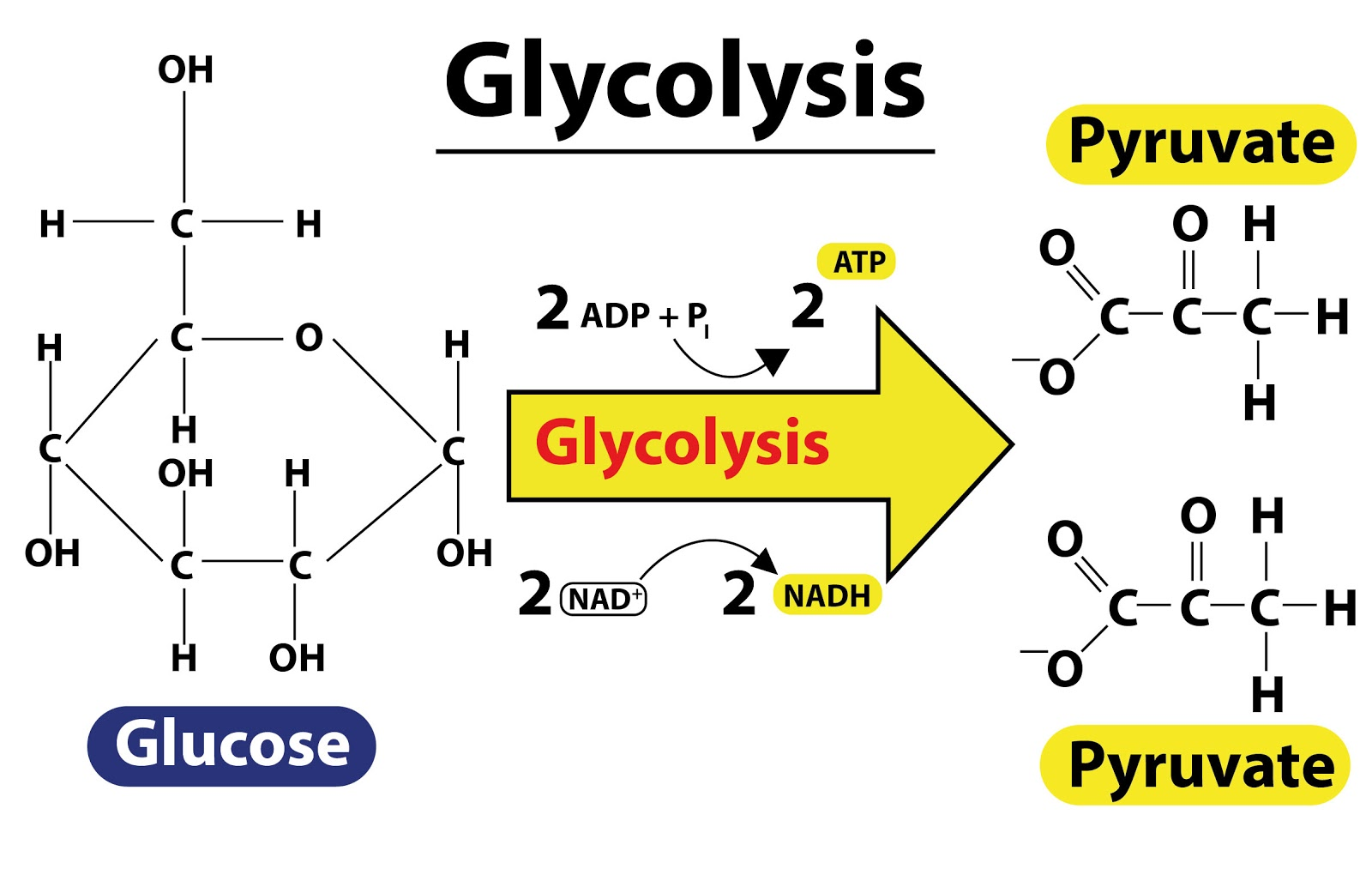
Write a short note on glycolysis.
Answer
405.3k+ views
Hint: Glycolysis is an anaerobic process that takes place in the cell cytoplasm. Glycolysis is the stage where 1 glucose molecule is broken down into 2 molecules of pyruvate along with the release of energy.
Complete answer
The glycolysis cycle begins when the glucose molecule is broken down due to certain conditions and results in the formation of the two molecules of pyruvic acid. In each glycolysis cycle, one ATP molecule is produced, and therefore 2 glycolysis cycles for 1 molecule of glucose. Thus, from 1 molecule of glucose 2 ATP molecules are produced. This cycle takes place outside the mitochondria. A total of 4 ATP molecules are produced in this whole cycle, out of which 2 ATP molecules are utilized in the process itself while the remaining 2 ATP molecules will be the net gain of the glycolysis cycle. Thus this process is called an exothermic reaction.
Additional information
Gustav Embden, Otto Meyerhoff, and Jakub Karol Parnas in 1918 were the first to describe the process of glycolysis which is also referred to as the EMP pathway. It is the most common type of glycolysis.
The term Glycolysis is taken from the two words, “glycan” meaning sugar and “lysis” meaning splitting so the term simply means splitting up of sugar. The pathway of glycolysis is divided into two different phases which are listed below:
The Preparatory (or Investment) Phase. In this phase, ATP is consumed.
The Pay-Off Phase - In this phase, the production of ATP occurs.

Note:
The process of Glycolysis involves catalyzed reactions that involve ten enzymes. As the breakdown in the case of the glucose molecule occurs similarly the other monosaccharides as fructose and galactose will also break down and result in the formation of their intermediates. Glycolysis is a metabolic pathway which is found in almost all the living organisms. It is found to be dependent upon the presence of oxygen and has an evolutionary history.
Complete answer
The glycolysis cycle begins when the glucose molecule is broken down due to certain conditions and results in the formation of the two molecules of pyruvic acid. In each glycolysis cycle, one ATP molecule is produced, and therefore 2 glycolysis cycles for 1 molecule of glucose. Thus, from 1 molecule of glucose 2 ATP molecules are produced. This cycle takes place outside the mitochondria. A total of 4 ATP molecules are produced in this whole cycle, out of which 2 ATP molecules are utilized in the process itself while the remaining 2 ATP molecules will be the net gain of the glycolysis cycle. Thus this process is called an exothermic reaction.
Additional information
Gustav Embden, Otto Meyerhoff, and Jakub Karol Parnas in 1918 were the first to describe the process of glycolysis which is also referred to as the EMP pathway. It is the most common type of glycolysis.
The term Glycolysis is taken from the two words, “glycan” meaning sugar and “lysis” meaning splitting so the term simply means splitting up of sugar. The pathway of glycolysis is divided into two different phases which are listed below:
The Preparatory (or Investment) Phase. In this phase, ATP is consumed.
The Pay-Off Phase - In this phase, the production of ATP occurs.

Note:
The process of Glycolysis involves catalyzed reactions that involve ten enzymes. As the breakdown in the case of the glucose molecule occurs similarly the other monosaccharides as fructose and galactose will also break down and result in the formation of their intermediates. Glycolysis is a metabolic pathway which is found in almost all the living organisms. It is found to be dependent upon the presence of oxygen and has an evolutionary history.
Recently Updated Pages
Glucose when reduced with HI and red Phosphorus gives class 11 chemistry CBSE

The highest possible oxidation states of Uranium and class 11 chemistry CBSE

Find the value of x if the mode of the following data class 11 maths CBSE

Which of the following can be used in the Friedel Crafts class 11 chemistry CBSE

A sphere of mass 40 kg is attracted by a second sphere class 11 physics CBSE

Statement I Reactivity of aluminium decreases when class 11 chemistry CBSE

Trending doubts
The reservoir of dam is called Govind Sagar A Jayakwadi class 11 social science CBSE

10 examples of friction in our daily life

Difference Between Prokaryotic Cells and Eukaryotic Cells

State and prove Bernoullis theorem class 11 physics CBSE

Proton was discovered by A Thomson B Rutherford C Chadwick class 11 chemistry CBSE

State the laws of reflection of light




